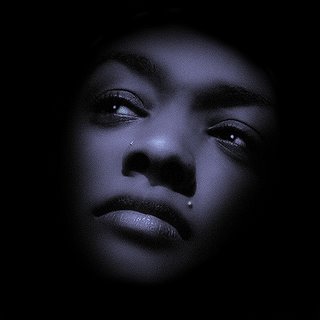In April, before performing at Rutgers University, Hip-Hip artist Asher Roth “tweeted” on his Twitter page: “Been a day of rest and relaxation, sorry twitter – hanging out with nappy headed hoes”. This comment from Roth just two years shy of Don Imus’s similar comment made about the Rutgers women’s basketball team, referringto them as “nappy headed hoes” which caused a fair amount of controversy, leading to Imus losing his job. Roths comments sparked a rash of commets from not only his Twitter followers and soon Roth apologized via Twitter stating that: “I’m extremely apologetic to anyone who took offense to my immature, bad joke.”

In my opinion, only a large social internet community such as Twitter could fuse together the worlds of a white semi-successful Hip-Hop such as Roth and African American feminist icons like Rebecca Walker. Furthermore, in my opinion, comments like this make Patricia Hill Collins’ notions of African American feminist thought even more legitimate and necessary in our post-modern society.
After reviewing Asher Roth’s “tweets” and “The Great Illmatic”, I believe that if what is illustrated in these comments illustrates the post-modern approach to African American Women’s identities, leaving them to be defined by semi-(allow me to repeat SEMI) famous rappers and old white sports anchors I want no part of it. These two are prime examples of African American women’s identities being illustrated through controlling images which allow others to define African American women, most often, in very negative ways.
As I do not believe things such as Roth’s “tweet” are in anyway a reflection of African American womens identity; I do not believe this approach is any reason for African American women, especially, to dismiss the legitamacy of Patricia Hill Collins’ notion of African American feminist thought. In a world where these controlling images are rampid in the media and across the internet, it is still ever so essential for African American women to continue to define themselves in positve ways as a means of combatting the negative images portrayed of them, even small insults like that made by Asher Roth. African American womens’ dismissal of this notion of African American feminist thought will inevitably lead to controllingimages being the only images availiable to the world of African American women, causing them to continuously be defined as “nappy headed hoes.”
Although I am as sure as “The Great Illmatic” that Asher Roth probably misspoke when he made these comments, I do agree that he might have become too comfortable with his GROWING status as a Hip-Hop artist and that this is a key example of where we as a society are at concerning issues of race. To me this is reminiscent of Tim Wise’s notion of “Racism 2.0”, a new breed of racism which is not the same overt racism we have historically seen, but one which goes unseen by most majority people when they as Illmatic suggests, get too comfortable, clumsy and lose sight of boundaries when making “jokes.” Although Roth’s status as a racist is is unlikely, it is apparent that he has become caught in the tangled web of this new version of racism. In learning to use his public voice in places such as Twitter where thousands of people can “follow” a string of 150 character thoughts projected by public figures and personal friends alike, I would urge up-and-coming artists like Roth to exercise caution with his “tweets.”
This same postmodern approach to African American women’s identities that should be encouraging African American women to continue to uplift the views of Patricia Hill Collins about combatting controlling images simultaneously encourages White men such as Asher Roth to dismiss the legitamacy of Patricia Hill Collins’ notions of African American feminist thought, whether they do so consciously or not. The fact that Roth could “jokingly” display such a disempowering image of African American women as he did with his “nappy headed hoes” comment, shows that as a White male he unknowingly utilizes his White privilege to take control of such images. This unconscious utilization of privilege in depicting African American women dismisses the legitamacy of claims made by Patricia Hill Collins by further clogging the venues through which Black women are viewed with more negative images.
Will Roth’s comments have any affect on his SEMI-successful rap career? Will African Americans still support his albums and concerts now that he has apologized? I guess so. However, I can’t help but to question if through, even myself, dismissing this as an isolated incidence of a young white man “learning” how to be a public figure is a little too dismissing for comfort. Although I do not believe this is a reason for African American women to dismiss the claims of Patricia Hill Collins I do believe it is a reason that most of us are more forgiving in instances such as this. But what will happen when the next Asher Roth comes around?


